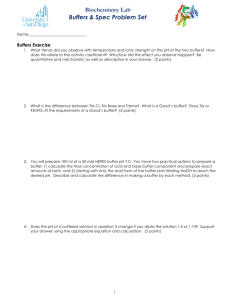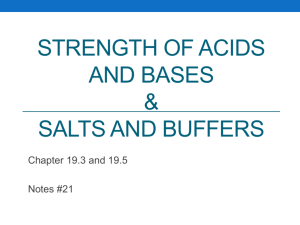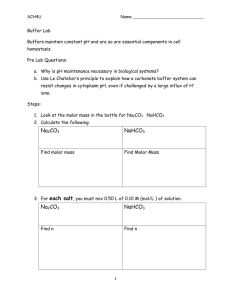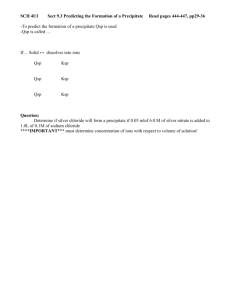solutions buffer
advertisement
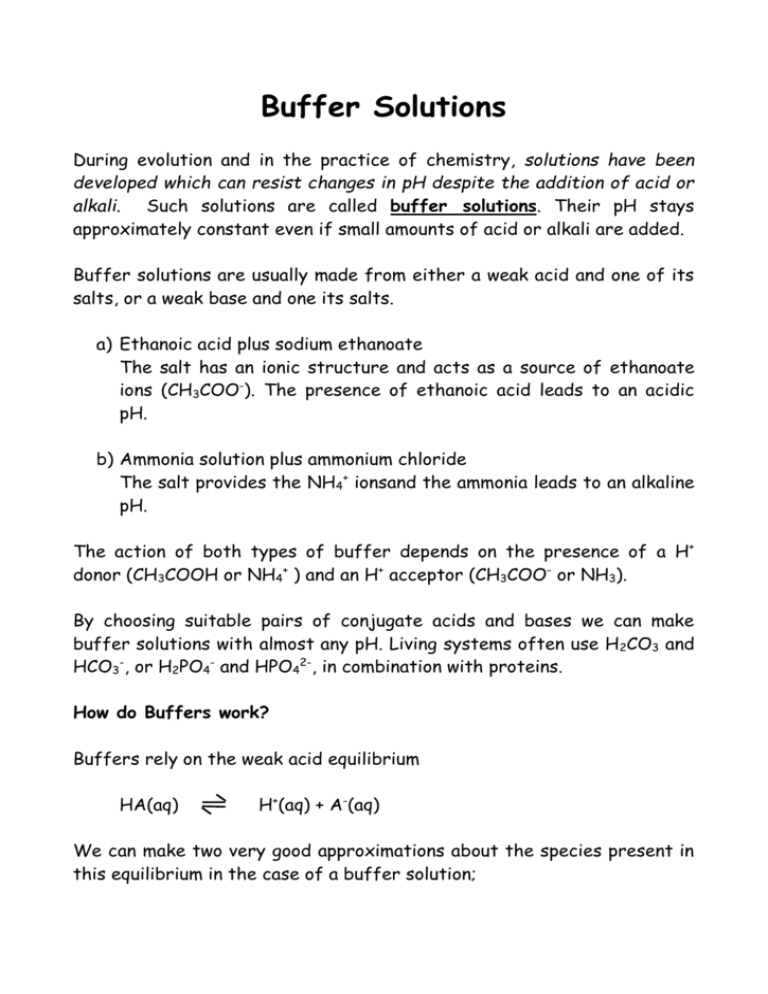
Buffer Solutions During evolution and in the practice of chemistry, solutions have been developed which can resist changes in pH despite the addition of acid or alkali. Such solutions are called buffer solutions. Their pH stays approximately constant even if small amounts of acid or alkali are added. Buffer solutions are usually made from either a weak acid and one of its salts, or a weak base and one its salts. a) Ethanoic acid plus sodium ethanoate The salt has an ionic structure and acts as a source of ethanoate ions (CH3COO-). The presence of ethanoic acid leads to an acidic pH. b) Ammonia solution plus ammonium chloride The salt provides the NH4+ ionsand the ammonia leads to an alkaline pH. The action of both types of buffer depends on the presence of a H+ donor (CH3COOH or NH4+ ) and an H+ acceptor (CH3COO- or NH3). By choosing suitable pairs of conjugate acids and bases we can make buffer solutions with almost any pH. Living systems often use H2CO3 and HCO3-, or H2PO4- and HPO42-, in combination with proteins. How do Buffers work? Buffers rely on the weak acid equilibrium HA(aq) H+(aq) + A-(aq) We can make two very good approximations about the species present in this equilibrium in the case of a buffer solution; Assumption 1: o All the A- ions come from the salt (can you explain this?) Assumption 2: o Almost all the HA molecules put into the buffer remain unchanged (can you explain this?) HA(aq) H+(aq) + A-(aq) Stays roughly constant because Plenty of HA to make more H+(aq) if some gets used up by added alkali. Plenty of A- to combine with any added H+ Calculations with Buffers All we need is the Ka expression for the relevant weak acid: [H+ (aq)] [A- (aq)] Ka = [HA (aq)] = [H+ (aq)] x [A- (aq)] [HA (aq)] Using assumptions 1 & 2 Ka = [H+ (aq)] x [salt] [acid] Eqn 1 Must know! We can rearrange Eqn 1 to find [H+(aq)] (or any other term!) [H+ (aq)] = Ka x [acid] [salt] Taking –log10 pH = pKa -log10 [acid] [salt] Eqn 2 Swats and AHa!



